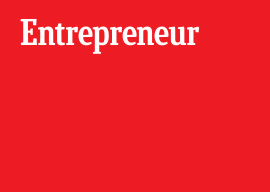Dr. Rosalind Picard is a cool customer. Seriously cool. Imagine if Martha Stewart had taken a hard left into computer science rather than cruising smoothly into the food-and-home-decorating business. That’s what you get with Dr. Picard. She founded not just the MIT Media Lab’s famed Affective Computing Research Group, but also two businesses: Affectiva focuses on emotion analytics (the company, she says, has “the largest database of facial expressions on the planet”) and Empatica uses human-data analytics to produce medical-quality wearables. Picard is an assured, blonde, stylish professor—zippered black-leather vest; tall black boots; interesting-looking watch on the wrist—who understands the psychological valence of words and stories. She’s got a resonant and clear voice and, unlike so many shoe-gazing technologists, always looks firmly into the eyes of her interlocutor.
Easy to see why nerds go wild when she speaks at TED, or anywhere else. Continuum went wild for Captain Picard ourselves (we say “Captain Picard” with total Trekkie respect) when she visited our studio on February 25.
The focus of Picard’s talk was the Embrace smart watch, a research-validated wearable designed by Empatica to help epileptic patients by monitoring them for signs of seizures and sharing this data with their caregivers. She spoke passionately about getting Embrace to market in order to prevent sudden unexplained death in epilepsy (SUDEP), and this mission-driven passion made us like her even more!
It’s clear that she’s putting her heart and tenured soul into this project, which is currently crowdfunded on Indiegogo. “We spend in a year what Apple spends in the last breath I [just] took,” she joked.
But what made us hunker down and listen up was Picard’s explanations of how the device worked. Picard informed us that Embrace tracks stress levels, emotional arousal, and physical activity. It measures electrodermal activity (EDA), through the surface of the skin, to understand autonomic stress. In English: it registers our skin’s involuntary responses to various emotional situations.
“Stress,” Picard told us, “is a great opportunity for collecting data.”
But it was only after Picard left us that we were able to process fully what she said… and the implications of her work for those of us in the innovation design world.
We can easily imagine Embracing the wrist of, say, every patient who is checked into a hospital for six months. The ability of designers to understand the emotional response of patients to an enormous amount of the entire experience—from sign-in to discharge, and even after—would provide unparalleled insight into how people feel about the experience of American healthcare.
Or imagine what kind of learning we could do if we employed Embrace to study the non-verbal reactions to the experience of patrons who experience an entirely new kind of hotel. Embrace’s sensors would teach many things we only otherwise hypothesized regarding a carefully crafted lobby experience. Maybe people really don’t love, say, the perfume-spraying player piano (no matter what they tell us after a few drinks in the lobby bar).
Or think of how Picard’s watch could help people in couple’s therapy get more precise readings on their feelings—sometimes talking it out can only reveal so much—and how the therapist could use this information to help the three of them redesign a fractured relationship. A couple wearing Embrace in real situations, one could get some clear insight into what triggers their emotions.
Good designers develop the ability to listen deeply to people. But we see that by embracing Picard’s technology, they (we!) could listen and understand even better.
When we asked Picard about the challenges she faced in developing Embrace she said, “Most the biggest problems are still to be discovered once it gets out there,” and we nodded as one. Wonder what our collective EDA was doing just then…



